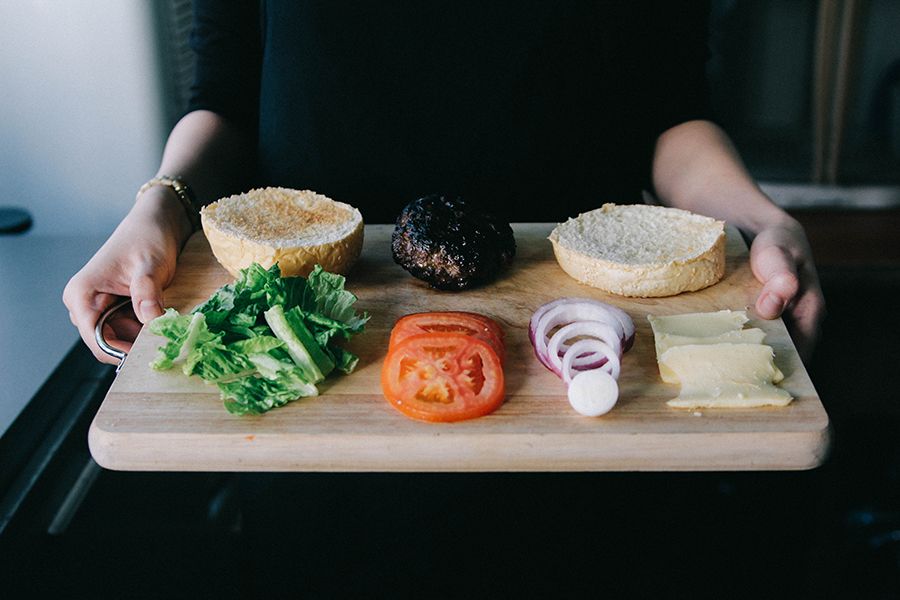In part 1 of our what is a website series, you discovered what makes a website run. Now you can talk the lingo with the tech team, let’s get you up to scratch with web designer talk.
This is what we cover in part 2:
- What is wireframing?
- What is a landing page?
- What is a website template?
- What makes a website responsive?
- What is a slider on a website?
- What is a navbar?
- What is a hamburger on a website?
- What is a website widget?
- What’s the difference between a website designer and a developer?
Web Design Basics
What is wireframing?
A wireframe is one of the first stages in the website design process. The web designer will sit down and layout where they’d ideally like each image, video, block of content, the ideal pages and more. It makes it easier to change any elements a client wants as there is no physical changing of a website to be done—just the outline. Consider it like the first sketch of a home you’re building.
 Source: Jason Coudriet on Unsplash
Source: Jason Coudriet on Unsplash
What is a landing page?
There are two slight variations of what a landing page is and does. In general terms, it is the specific web page someone lands on when they visit your website, such as a services or blog page. While in digital marketing speak, it’s a page created for lead generation purposes. So, if someone clicks on an ad, they are sent to a page specifically to target the type of user expected to do so—hopefully equalling more business.
What is a website template?
Whether you’re building a website yourself through a platform* or with a digital marketing service, like Localsearch, you’ll probably be asked to select a template. A template is a pre-designed layout to get you started. Your designer can then tweak it to suit your business.
*Speaking of free website builders, have you seen why they actually end up costing you more in the long run? Read more here.
What makes a website responsive?
As we learnt in part 1 of the What is a…series, a responsive website is one that works on any device—which is important. So, how is that accomplished? Again, referring back to part 1, it’s all to do with what is done with the CSS and HTML. Text size, images, layout and everything else has to be designed to flex like Flubber (remember, Flubber?) for desktops, mobiles and tablets. Trust us; it’s best left to a professional.

On-Website Features
What is a website slider?
The fancy image slideshows you see on a website are known as sliders. They are a great way to showcase business, product or service benefits and other information in an eye-catching way. Each slide holds a different image, which can be linked to different pages, if needed.
What is a navbar?
Think of a navigation, AKA nav, bar as an index for a website. It shows website visitors the different pages and information on a website so they can navigate it with ease. A responsive navbar is one which ‘collapses’ into a button or to the side of the web page to not take up room on the screen. When the person hovers or clicks on the button or side bar, it expands to show all available information.
What is a site map?
Site maps can be part of a content or design role. The site map is a layout of all the major pages on the website, as well as any sub-pages. You may also hear main pages be called parent pages, and subpages be called child pages.
What is an orphan page?
Parent and child pages are shown in the site map and can be seen and found by users. An orphan page is one without any direct links to its location. SEO experts advise against having orphan pages unless absolutely required, so it’s one of those things to avoid unless working with an expert.
What is a hamburger on a website?
First cookies (see part 1) and now hamburgers! In the corner of a webpage or even your web browser, you may see an icon with three lines stacked ontop of each other. This is a hamburger. Technical term, right? They are part of the navigation and may also be known as a flyout menu.

What is a website widget?
Widgets sound like a type of insect or fun toy, but they’re really a little program embedded into your website. A widget essentially lets you borrow another website’s technology and put it on your own website. Take our Localsearch widgets for instance…
With a Localsearch widget, you can add a stream of reviews from your business profile on www.localsearch.com.au, tell people to leave you a review or advise you’re locally trusted. Other widgets from other platforms include Twitter feeds, blogs and much more. Learn how to add one to your business website.
What’s the difference between website design and development?
Web design and web development are both vital in a website build. The design takes care of the aesthetic aspects, such as the layout, colouring, etc. While web development makes it come to life so people can use it.
Can’t be bothered with all the mumbo jumbo and hassle of learning website language? Leave it to us.
At Localsearch, we build responsive and adaptive websites to suit your business. We handle the design, development, hosting, email hosting, domain, content and anything else you need help with. Plus, we’re based on the Gold Coast in sunny Queensland, so your support is there when you need it—no overseas call centres in the middle of the night. Contact us now.